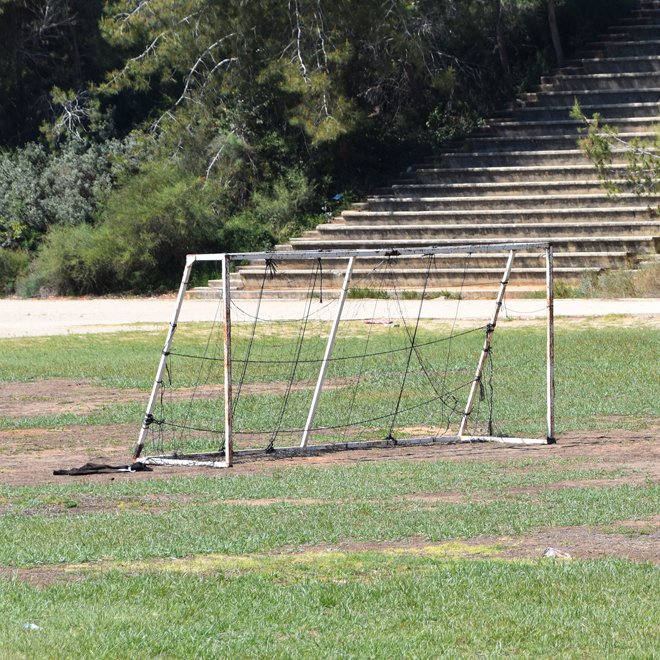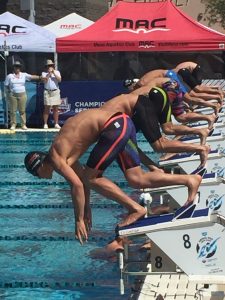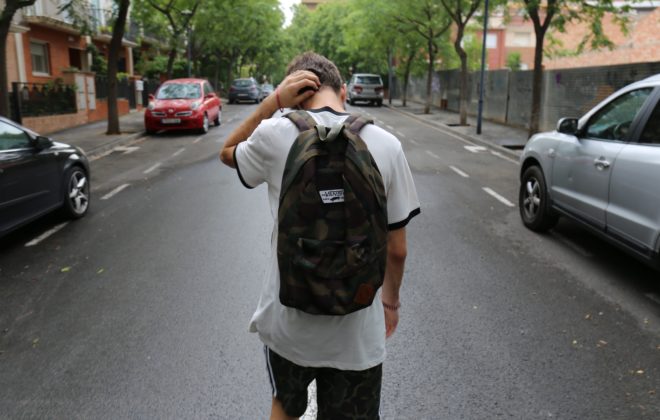Grass-Roots Growth: Why Trickle Down Sport Does Not Work
Grass-Roots Growth: Why Trickle Down Sport Does Not Work
By Wayne Goldsmith
“Change won’t come from the top, Change will come from mobilized grass-roots.”
Barack Obama
Grass-roots sport is the current flavor of the sporting world.
Everywhere I go around the world, National Sporting Organizations, Government Sporting Bodies and State and Regional Sporting organizations are talking about, arguing over and investing in grass-roots sport.
As the numbers of kids participating in competitive sport continues to decline, sporting organizations have finally and belatedly hit on the “startling” but somewhat obvious realization that it’s time to seriously invest in their grass-roots.
Typically, Sporting Organizations have looked to blame everyone and everything for this decline…
The Internet…
Lazy Kids of “this” generation…
Lack of Money…
Lack of Facilities…
The Economic Climate…
Changing Socio-Demographic Conditions…
The Wide Range of Sporting Options available………you name it – we’ve blamed it!
But – the bottom line is – whilst you can try to blame anyone and anything you like – it’s time to embrace the unalienable truth and to accept the responsibility for the fact that the REAL problem, the REAL reason why competitive sport is failing all over the world is due to the way we’ve led, delivered, managed and driven sport for the past 50 years.
Here’s how and why we’ve failed and what we can do about it.
Grass-Roots: Why National Programs Don’t Work.
The decline in the number of kids playing competitive sport started many years ago but in general, sporting organizations at National and Regional level either didn’t take it seriously, saw the trends as temporary fluctuations in their growth projections or thought “it will never happen to us”.
Predictably, when faced with the reality of falling participation, many sporting organisations resorted to their usual routine and their standard response to addressing issues…..The introduction of the “NEW PROGRAM” or what I call “Trickle Down” Sport.
National Sporting Organizations and Government Sporting bodies are merely mimicking the way governments work all over the world- i.e. Trickling Down programs and investment from Top to Bottom.
And – the plain truth of the matter is – Trickle Down Sport – leading sport from Top to Bottom…….DOES NOT WORK!
It doesn’t work now and it hasn’t worked for some time or….we wouldn’t be having these conversations about the collapse of competitive sport around the world, would we?
How Trickle Down Sport is Delivered Around the World and Why it Fails Grass-Roots Sport.
This is the way National Sporting Organizations and Government Sporting bodies have tried to lead sport for the last few decades. When you think about it, is there any real doubt as to why Trickle Down sport has failed?
The Trickle Down Sport Process:
- The National Sporting Organization or Government Sporting body becomes aware of a need or a problem in sport;
- They bring in a consultant or a research company of some kind or hold a national “think-tank” or crisis meeting;
- The consultant or research company completes a research project and makes recommendations for change – in the “Report” – to the Sport’s Board and/or Executive;
- The National body typically responds to the Report with a new “Program” designed to fill the need or to fix the problem;
- The National body then brings their “Stakeholders” together to tell them all about this wonderful new “Program” and try to motivate the stakeholders to get out into their communities and “sell” the new “Program”;
- The stakeholders then go back to their States or Regions or Districts or Clubs (depending on sporting system) and “sell” the new national program to the “end-users” of their sport, e.g. Club administrators, athletes, coaches, parents, officials etc.
STOP HERE for a moment and just think…..think about the logic of this typical Trickle Down Sport management model in light of what we’re seeing right now in sport around the world.
It doesn’t make any sense to maintain our commitment to this antiquated method of leading, managing and changing sport.
Here’s why!

Why Trickle Down Sport Doesn’t Work.
There’s eight reasons why Trickle Down Sport doesn’t work and why it’s failing grass-roots sport:
- Habits and traditions: The biggest change killer in sport are these seven words…“that’s the way we do it here”. No matter how good the program is and regardless of how positive and pure its motives may be, there is always a group of people in sport who will reject anything new for no reason other than it is different to what they are currently doing.
- “Chinese” Whispers: Ever play the kids’ game Chinese Whispers? What happens? Every time you tell a story to another person, that person slightly changes the story. So think about how the current Trickle Down model of sport is being conducted. The National body tells the State or Regional body about the new program. The State or Regional body then shares the story of the new program with the local associations or clubs. Then the Club administrators share the story with their members – coaches, players, families, officials etc. It is not realistic to expect that the integrity and the intent of the original concept will be the same when it gets to grass-roots level as it was when someone introduced the idea in the National Sporting body’s Board room.
- Political Filtering and Censoring: Sport is political. All over the world. Every sport – at every level – is highly political, driven largely by self-interest and conservative thinking. So what happens when a National Sporting Organization or Government Sporting Body comes up with a new program which they believe will change the sport for the better? At every level of sport, that new program becomes subject to filtering and censoring by sports administrators and others in the industry who see the changes as potentially damaging and likely to impact on their political power or financial base. As a result, the original idea rarely gets to the “end-users” in the shape and form in which it was introduced.
- Ineffective consulting, reporting and decision-making processes: There are a lot of sport consultants out there. I’m one of them. I’ve had almost 30 years in this business and I’ve worked at every level of sport in many different countries. However, increasingly there’s a lot of consultants from the business world with little or no experience in sport who are advising National Sporting Organizations. As a result, National Sporting Organizations are shifting to adopting “corporate” models of governance such as imposing rigid KPIs on their stakeholders and trying to implement advanced corporate style management models on what is ostensibly an industry driven by passionate, part-time, amateurs. It does not work. And it will not work.
- Time: The reality is that this industry is moving rapidly and dramatically. Things are changing every week and people working in grass-roots sport need help right now. They also need the flexibility to change their plans and their practices quickly without needing to seek approval from the sport’s administrators further up the “chain”. The typical Trickle Down sport model which wastes time tied up in committees, sub-committees, discussion groups, surveys, questionnaires, Board meetings etc. is so inefficient and ineffective that by the time the “end-user” gets what they need it is often too late to have any real impact.
- Lack of real understanding of and connection with the actual deliverers of the sport’s experience: One of the great failures of Trickle Down sport is that in general National Sporting Organisations and Government sporting bodies do not understand the real needs of the “end-users” – the people who are engaging with sport and experiencing sport at grass-roots level.
- A lack of understanding that people play like their place: People all over the world play like their place, i.e. it is the unique local cultural, demographic, socio-economic, historical, geographical and climatic issues which determine how people want to engage and connect with their sports experience. As the majority of sport’s decision makers are based in major cities, it is unlikely that they have a clear understanding of and connection with the people in metropolitan, rural and regional areas delivering the sport experience at the “end-user” level every day.
- The need for each level of sport to maintain their power and influence: There’s one basic rule about “power”: those who have it are reluctant to give it up. What sport needs right now is the maturity and courage to empower the people at grass-roots level to make their own decisions, spend money on the things they know are needed by their “end-users” and to take ownership and responsibility for their own outcomes. This is a frightening concept for many Board members and Executives currently sitting in leadership roles in National Sporting Organizations and Government Sporting bodies and not too many are ready – just yet – to hand over their power and influence to the very people who need it.

Grass-Roots before Greatness – The Grass-Roots / High Performance Connection.
Is there a difference between Grass-roots sport and High Performance Sport? Absolutely.
In simple terms, Grass-roots is about fun, friendships, families and fitness and High Performance is about winning when and where it matters: ostensibly the two aspects of the sports industry are light years apart and very, very different.
However, there is also a connection: a very important and extremely obvious connection…The Only Kid Who Can’t Improve is the One Who is Not There!
The logic goes like this:
- In most sports, high performance athletes do not start to begin realizing the full extent of their talent or make an uncompromising commitment to think, act, live, train and compete as a high performance athlete until at least their mid-late teens;
- With so many distractions, obstacles, challenges and difficulties to overcome in their early to mid teens, increasingly kids will only do activities that:
- They enjoy doing;
- They find meaningful and relevant;
- Foster friendships and / or meaningful social connections;
- Provide opportunities for them to learn, to grow and to improve;
- Therefore – if the sport experience is not fun, meaningful, relevant, focused on friendships and social connections and isn’t centred on learning, the kids will not come AND therefore…..
- There’s no one left to enter into high performance programs.
Right now – the future of sport – at all levels – depends on how well we support grass-roots sport.
Grass-Roots: A Rising Tide Lifts all the Boats.
There’s a phrase – “Think Globally – Act Locally”.
This means, be aware of the big picture and what’s happening around the world but act to change things in your own life, in your own home and in your local community.
Whilst National Sporting Organizations and Government Sporting bodies will – for the short-term at least – continue to set the overall strategic direction of sport, the real power of sport now lies in the hands of grass-roots sport: in the hearts and minds of the athletes, the families, the coaches, the officials and the administrators working at grass-roots level.
So what are some things sports leaders can do to help facilitate the growth and the sustainable success of the grass-roots in their sport?
- Invest in the capability of the deliverers of your sport: There’s an old phrase: give a man a fish and you feed him for a day; teach a man to fish and you feed him for a lifetime. The days of National Sporting Organisations and Government Sporting bodies coming up with all-new, all-singing, all-dancing new National Programs which will cure all sport’s ills are over. Invest in PEOPLE not programs – and specifically invest in the people driving grass-roots sport at Club, District and Regional level. Teach people “how to fish” then support them with everything you’ve got!
- Focus on the Five Es: Engagement, Entertainment, Empowerment, Enjoyment, and the Experience of sport for the “end-user”: Sport is all about the “end-user”. It’s about meeting the needs of the kids and the families at grass-roots level. It’s about providing the environment and the opportunity for them to experience sport the way THEY want to experience it: not the way you want to sell it to them. Listen to your “end-users”. Learn from them. And respond to their needs. They are your sport.
- Invest in SPACES not PLACES: You can’t solve your sport’s problems by building competition and training facilities, gyms, grandstands, National Offices / Headquarters, Institutes or Academies. Think about your “end-users” differently. Instead of trying to attract them into your “places” – get off your backside and get out there and connect with the athletes, coaches, officials, parents and administrators working at grass-roots level all over your nation. Get out into their “spaces”, connect with them, listen to them, build meaningful relationships with them, partner with them and watch your sport flourish.
Summary:
- Trickle Down Sport hasn’t worked – and isn’t working. It is time to change the way we lead, manage and deliver sport.
- Every significant change starts with the grass-roots….be it political change, cultural change or sporting change – real change starts with the people who live the sport experience at grass roots-level day after day;
- The good news is – the changes you are seeking – the ones that will make the biggest impact on your sport are FREE. Thinking differently costs nothing. Developing and delivering more engaging and enjoyable sports experiences at grass-roots level doesn’t require money. What is does take is a commitment to inspire change, the passion and energy to drive change and the resilience and determination to persist with the change process as sport comes to terms with this new grass-roots driven industry dynamic.
Tags In
Related Posts
5 Comments
Leave a Reply Cancel reply
Categories
- Athlete Development (3)
- Coach Development (1)
- New Sport (10)
- Sports Parenting (1)
- Sports Participation (1)
- Sports Science (1)
- Sports Systems (4)







Wayne great great article. Bottom Up not Top Down. Private sector innovators but how can this be done at scale not silo. https://btwlsummit.coachesclinic.com Building Tennis …postcode by postcode …could I interview you please for BTWL SM platforms?
Sorry Mark. Just read this. Happy to do an interview. Sincere apologies for not getting to you sooner. WG
[…] to try and build and grow participation in your sport BEFORE you’ve seriously committed to building and growing better quality grass roots experiences, you are putting the proverbial cart before the horse and you are wasting your […]
[…] “Trickle-down” sport does not work. Time after time sporting organizations and government agencies come up with some all new, all singing, all dancing new program with a great acronym, fund it heavily then roll it out across the national sporting system telling people it’s the panacea to all of their problems. IT DOES NOT WORK. […]
Grass Roots Sport done well is a universal environmemt fpr the development of intrinsic and extrinsic life skills that build social capital and functional communities. Peak bodies have lost connectivity with grass roots. Peak Bodies know that grass roots is required. However, they have focused on being the biggest and the best; they do not understand how to return sport to being one of the most valuable environments for outstanding community development. They continue to clutch at straws, spend a fortune on printing a million posters that sit on walls and are never read. What is needed is functional, practical programs that optimise the participation experience for ALL; players; parents; coaches; referees and administrators. What is needed is to reduce confrontation and promote and reward positive sportsmanlike behaviour. The only way that this can happen is trickle up.